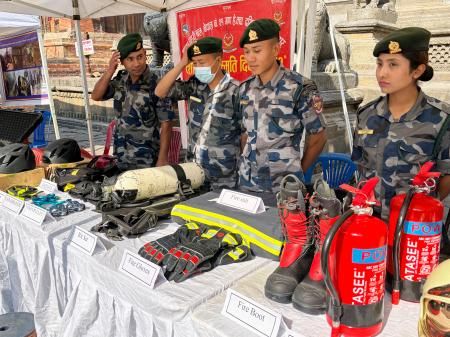Nepal: Reflecting on a Decade of Recovery After the 2015 Earthquake
Ten years have passed since the devastating 2015 Nepal earthquake, a catastrophic event that reshaped the nation's landscape and its people's lives. This article reflects on the progress made in the decade since, the challenges that remain, and the resilience shown by the Nepali people in the face of unimaginable adversity. We'll explore the recovery efforts, both successes and setbacks, and look towards the future of Nepal's reconstruction.
The Scars Remain: Remembering the 2015 Earthquake
The 7.8 magnitude earthquake that struck Nepal on April 25, 2015, and its subsequent aftershocks, claimed thousands of lives and left millions homeless. Ancient temples crumbled, homes were reduced to rubble, and vital infrastructure was severely damaged. The impact extended far beyond the immediate physical destruction, affecting the nation's economy, social fabric, and mental health. Images of the devastation – collapsed buildings in Kathmandu, landslides in mountainous regions – remain etched in the global consciousness.
Immediate Aftermath and International Aid
The immediate aftermath was chaotic, with a desperate need for emergency relief. International aid poured into Nepal, providing crucial assistance in search and rescue, medical care, and the distribution of essential supplies. Organizations like the Red Cross, World Health Organization (WHO), and numerous NGOs played a vital role in this initial response. However, coordinating this massive international effort presented significant logistical challenges, particularly in reaching remote communities.
A Decade of Reconstruction: Progress and Challenges
The subsequent decade has witnessed significant reconstruction efforts, but the path has been far from smooth.
Housing Reconstruction: A Slow but Steady Process
The government launched ambitious housing reconstruction programs, aiming to provide earthquake-resistant homes to those who lost theirs. While progress has been made, the process has been slow, hampered by bureaucratic hurdles, corruption allegations, and difficulties in accessing remote areas. Many families are still living in temporary shelters, facing the ongoing threat of monsoon seasons and potential future earthquakes. Finding effective and sustainable solutions for housing remains a critical priority.
Infrastructure Development: Rebuilding for the Future
The earthquake also significantly damaged Nepal's infrastructure, including roads, schools, and hospitals. Rebuilding this infrastructure has been a major undertaking, requiring considerable investment and technical expertise. While some progress has been seen in road improvements and the construction of new schools and hospitals, much work still needs to be done to ensure resilience against future disasters. Investment in earthquake-resistant design and building codes is paramount.
Economic Recovery: Boosting Resilience
The earthquake dealt a severe blow to Nepal's economy, impacting tourism, agriculture, and other key sectors. Recovery has been gradual, hampered by political instability and other economic challenges. Diversifying the economy and promoting sustainable tourism are crucial for long-term economic resilience.
Looking Ahead: Lessons Learned and Future Outlook
The past decade has highlighted the importance of disaster preparedness, effective governance, and international cooperation. Nepal has learned valuable lessons, which must inform future disaster response and reconstruction efforts.
Strengthening Disaster Preparedness: A Continuous Process
Investing in early warning systems, community-based disaster preparedness programs, and building codes resistant to earthquakes are essential for mitigating the impact of future disasters. Regular earthquake drills and public awareness campaigns are crucial.
Promoting Sustainable Development: Building a Resilient Nation
Nepal's recovery must be built on a foundation of sustainable development, focusing on environmental protection, climate change adaptation, and poverty reduction. This includes fostering economic opportunities and empowering marginalized communities.
Continued International Support: A Vital Role
Continued international support remains vital in Nepal's journey towards full recovery. This support should be focused on building capacity, promoting good governance, and supporting sustainable development initiatives.
The road to full recovery remains long, but the resilience of the Nepali people remains unwavering. Reflecting on the past decade offers valuable lessons, shaping a more resilient and prosperous future for Nepal. By learning from past mistakes and continuing to prioritize sustainable development and disaster preparedness, Nepal can build a brighter future for generations to come.
